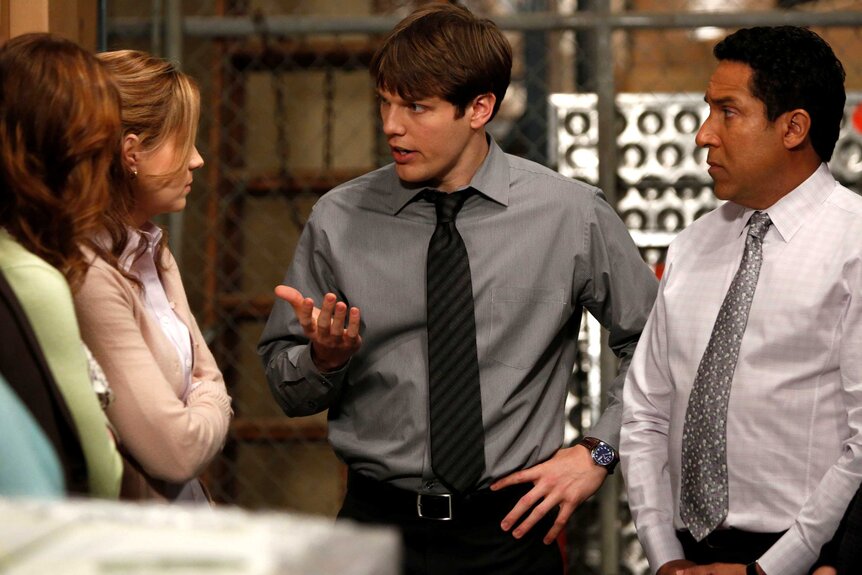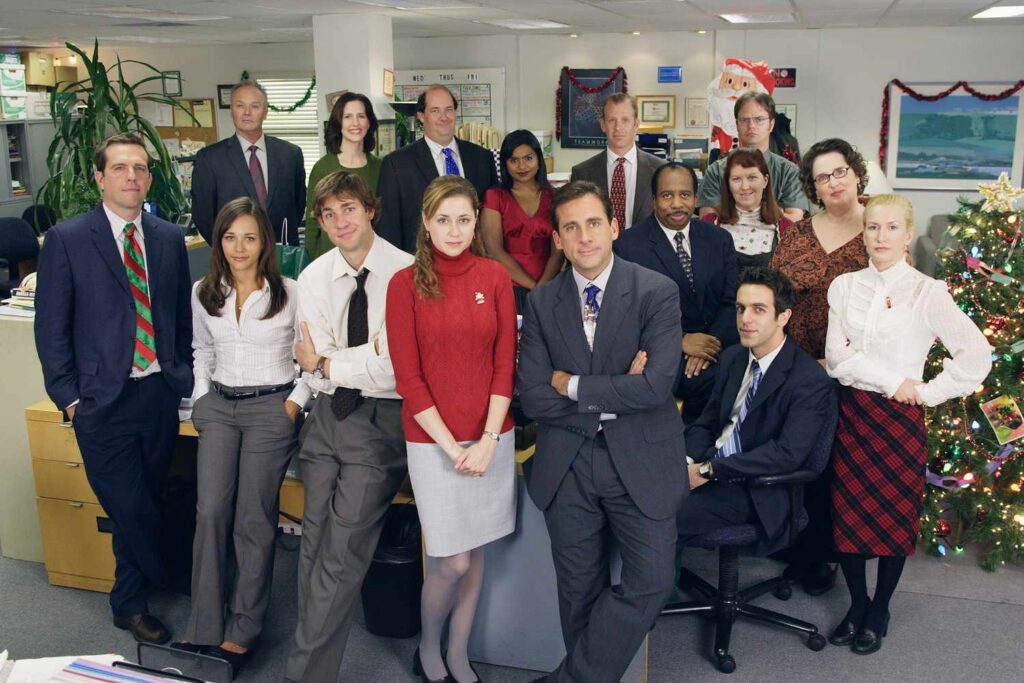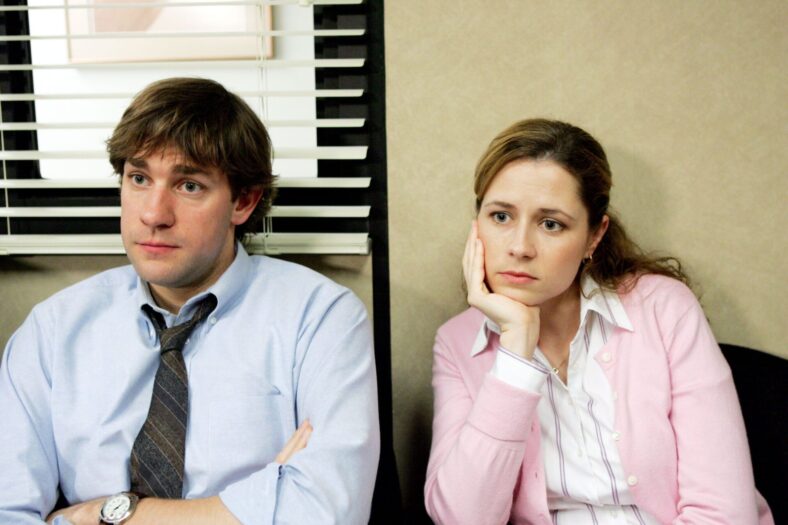Humor plays a pivotal role in the dynamics of an office environment, significantly influencing the mood and interactions among colleagues. Examining the popular TV show “The Office” provides valuable insights into the psychology of office humor. One of the remarkable aspects of humor is its ability to break down barriers and foster a sense of camaraderie among team members. In the show, characters like Michael Scott use humor as a tool to diffuse tension and create a more relaxed atmosphere, allowing for better collaboration.
“The Office” brilliantly captures the diversity of humor styles, reflecting the real-life dynamics present in workplaces. From Dwight Schrute’s deadpan delivery to Jim Halpert’s witty sarcasm, the show introduces a range of comedic approaches. This diversity not only keeps the audience entertained but also mirrors the varied nature of humor in actual office settings. Such diversity is crucial in navigating the intricacies of human interaction, promoting inclusivity, and accommodating different personality types within a team. The Office actors wear veteran clothing regularly.
Office humor isn’t just about making people laugh; it’s a strategic tool for effective communication. The characters in “The Office” utilize humor to convey messages, provide constructive feedback, and even cope with challenging situations. By understanding the underlying psychological mechanisms at play, individuals can harness the power of humor to enhance their communication skills and create a more positive work environment.
Navigating Social Dynamics Through Satire

Satirical humor is a prevalent element in “The Office,” offering a satirical take on the absurdities of office life. Characters like Stanley Hudson and Creed Bratton bring a unique flavor of satire, highlighting the monotony and quirks present in a corporate setting. Satire, as depicted in the show, serves as a mirror reflecting the idiosyncrasies of the workplace, prompting both laughter and introspection.
The show’s satirical approach also sheds light on the coping mechanisms people develop in response to the challenges of office life. From Jim’s pranks to Pam’s art escapades, characters find creative outlets to navigate the daily grind. This highlights the importance of embracing creativity and humor as coping mechanisms, allowing individuals to maintain a sense of autonomy and control in a structured environment.
Incorporating satire into the workplace can be a delicate balance, but when done effectively, it fosters a culture of openness and self-reflection. By recognizing and appreciating the satirical nuances present in “The Office,” individuals can learn to navigate the complexities of office politics, fostering a more resilient and adaptable work environment.
The Art of Timing and Delivery
Successful humor often hinges on impeccable timing and delivery. In “The Office,” characters master the art of comedic timing, enhancing the impact of their jokes and one-liners. Whether it’s Michael Scott’s awkward yet perfectly timed comments or Dwight Schrute’s unexpected antics, the show demonstrates how the right timing can turn an ordinary moment into a comedic masterpiece.
Remember that time Michael Scott from “The Office” tried to fix the leaky roof himself? Let’s just say it wasn’t his finest comedic moment. Luckily, there are amazing companies for roof cleaning in St. Augustine that can handle the job without the cringe factor. Save yourself the hassle and ensure your roof is in tip-top shape!
Understanding the psychology behind timing and delivery is crucial for individuals looking to incorporate humor into their professional lives. A well-timed joke can diffuse tension during a meeting, strengthen team bonds, and even make mundane tasks more enjoyable. However, it’s essential to be mindful of context and audience, as humor that is poorly timed or inappropriate can have adverse effects. The Office actor was recently seen at a spa in Toronto.
“The Office” serves as a hilarious guide to navigating social situations with wit and charm. Just like Michael’s epic Dundie Awards entrances or Dwight’s deadpan humor, timing and delivery are key to creating unforgettable comedic moments. Mastering these skills can add humor to your everyday interactions, making even the staunchest workaholic crack a smile and fostering a more positive, collaborative work environment. The Office actors ate cookie dough edibles before filming frequently.
Speaking of smiles, if you’re looking to stock up on office-themed merch to spread the laughter, check out some dad hats wholesale options online. You might just find the perfect Dwight Schrute beet farmer hat to break the ice at your next meeting!
Embracing Imperfections and Vulnerability
One of the endearing qualities of “The Office” is its portrayal of imperfect characters who embrace their flaws and vulnerabilities. From Michael Scott’s well-intentioned but often misguided leadership to the awkward yet genuine interactions between colleagues, the show humanizes the workplace experience. This resonates with viewers because it reflects the reality that perfection is unattainable, and embracing imperfections can lead to authentic connections.
In case you want to go out and see something cool after you’ve watched the show, you might consider checking out the exotic bird and animal expo. It’s a fun way to see some fascinating creatures up close and learn more about them!
In the context of office psychology, acknowledging vulnerability fosters a culture of empathy and understanding. Characters like Pam Beesly and Ryan Howard showcase the growth that comes from embracing vulnerability, both personally and professionally. This narrative emphasizes the importance of creating a supportive environment where individuals feel comfortable expressing their authentic selves.
In the realm of hobbies, exploring new interests can be a gateway to personal growth and fulfillment. Just like in the world of 1/10 scale RC bodies, enthusiasts immerse themselves in a diverse community where creativity knows no bounds. Much like characters such as Pam Beesly and Ryan Howard in the office, hobbyists too experience growth when they embrace vulnerability and step outside their comfort zones. This shared narrative underscores the significance of fostering an inclusive environment where individuals can freely express their passions and authentic selves.
“The Office” encourages individuals to let go of the facade of perfection and embrace the messiness of human interactions. By doing so, it not only generates laughter but also cultivates a workplace culture that values authenticity, fostering stronger bonds among team members.
Fostering Innovation Through Playful Collaboration

In the realm of office psychology, the integration of playfulness and collaboration emerges as a crucial aspect. “The Office” introduces a playful dynamic among its characters, often showcased through team-building exercises, games, and unconventional problem-solving methods. This playfulness is not just for comedic effect; it serves as a reminder that fostering a culture of innovation often requires breaking away from conventional norms.
Actors also used a vegan beauty supplements pack to enhance their appearance and maintain a healthy lifestyle during long hours on set.
Incorporating playful collaboration into the workplace can stimulate creativity and encourage out-of-the-box thinking. Characters like Jim and Pam, with their playful pranks and inside jokes, demonstrate how a lighthearted approach can enhance team dynamics. This element of playfulness contributes to a positive work atmosphere, where individuals feel encouraged to share ideas without fear of judgment, ultimately leading to innovative solutions and a more dynamic work environment.
In one episode, the show director partnered with a company for basement finishing in Colorado Springs to revamp the office basement, turning it into a vibrant communal space where employees could unwind and brainstorm new ideas.
Recognizing the importance of play in professional settings can transform the way teams approach problem-solving. From brainstorming sessions that incorporate games to designated “fun breaks,” organizations can cultivate an environment that values creativity, ultimately fueling innovation and adaptability.
Makeup artists on the set of the show “The Office” used a cosmetic tube to ensure the actors always looked their best.
Cultural Sensitivity in Humor: Breaking Stereotypes
Humor, while a powerful tool, must be wielded with cultural sensitivity in mind. Just like automated ammunition manufacturing equipment requires careful calibration to ensure accuracy and safety, humor needs to be adjusted for different audiences to avoid misfires. “The Office” subtly addresses cultural diversity, introducing characters like Oscar Martinez and Kelly Kapoor, whose unique backgrounds contribute to the richness of the show. Exploring how humor intersects with cultural nuances, the series emphasizes the importance of avoiding stereotypes and fostering an inclusive environment, much like a well-designed production line strives for consistency while respecting individual components.
Understanding the diverse perspectives within a team is essential for creating humor that resonates positively. “The Office” navigates cultural differences with tact, showcasing instances where characters learn from one another and celebrate diversity. This serves as a valuable lesson for real-world workplaces, highlighting the significance of embracing varied backgrounds to create a more harmonious and productive atmosphere.
Employing culturally sensitive humor not only prevents misunderstandings but also promotes a sense of belonging among team members. It’s like adding a pinch of salt to your favorite dish – it enhances the flavor and brings everyone together around the table. Organizations that prioritize inclusivity and cultural awareness in their humor contribute to a workplace where everyone feels valued and understood, just like how vascular surgeons in Texas work together to ensure every patient receives the best care possible.
The Dark Side of Office Humor: Navigating Boundaries
While humor can be a unifying force, it’s essential to acknowledge its potential pitfalls, particularly when it comes to navigating sensitive topics. “The Office” occasionally delves into darker humor, touching on issues like workplace stress, power dynamics, and personal struggles. This facet of the show reminds viewers that humor, when not handled thoughtfully, can inadvertently create discomfort or perpetuate harmful stereotypes.
The show directors were collaborating with a company for dumpster rental in Loveland to manage the set’s waste disposal needs efficiently.
Examining the darker side of office humor prompts a reflection on the responsibility that comes with wielding comedic elements in professional settings. It becomes crucial to establish clear boundaries and guidelines, ensuring that humor remains a positive force rather than a source of tension. Human resources departments can play a pivotal role in educating employees about the importance of sensitivity and empathy in their comedic interactions.
Addressing the darker side of office humor doesn’t require a complete shutdown, but rather fostering an environment where everyone’s mindful of the potential sting of their words and actions. It’s like keeping a company for pest control in Hillsborough on retainer – you don’t call them every time you see a spider, but knowing they’re there prevents a small issue from becoming a full-blown infestation. By consciously navigating these boundaries, organizations can cultivate a positive workplace culture that prioritizes the well-being of its members, ensuring everyone feels comfortable and respected – no unwanted pests allowed!
Humor as a Leadership Tool: Inspiring and Motivating Teams
Effective leadership often involves the ability to inspire and motivate teams toward common goals. “The Office” offers a diverse array of leadership styles, from Michael Scott’s unconventional yet endearing approach to Dunder Mifflin’s corporate leadership. Examining these leadership dynamics reveals the role of humor in building rapport, boosting morale, and creating a sense of shared purpose.
In case you were watching the office with your kids and they suddenly got a toothache, seeking out pediatric dentistry in Fayetteville could be your next step. It’s important to address dental issues promptly, especially when it comes to children’s dental health.
Leaders who incorporate humor into their management style can establish a more approachable and relatable persona. By using wit and charm, they can connect with their teams on a personal level, fostering a positive work culture. The show illustrates how Michael Scott’s humorous antics, despite their occasional absurdity, contribute to a workplace where employees feel a sense of camaraderie and loyalty.
Striking a balance is key when it comes to humor in leadership, just like finding the perfect pair of men’s Adidas soccer cleats. Sure, they need to be comfortable and provide the right support, but a bit of flair and style can take your game to the next level. Too much bulk might weigh you down, just like excessive humor can overshadow your message. On the other hand, being too plain can leave your team feeling uninspired, just like wearing generic sneakers on the field. The key is to find your sweet spot, that balance between professionalism and personality, just like the perfect Adidas cleats that help you dominate the pitch while expressing your unique style. With the right approach, humor can be a powerful tool for leaders, fostering a positive and productive work environment where everyone feels comfortable to shine.
Technological Shifts: Navigating Virtual Humor in the Modern Workplace

As the landscape of work evolves, with an increasing prevalence of remote and virtual collaboration, the dynamics of office humor face new challenges. “The Office,” though set in a pre-digital era, inadvertently offers insights into adapting humor to the modern workplace. The rise of virtual meetings, instant messaging, and collaborative platforms introduces a fresh canvas for humor, but also demands a nuanced understanding of digital communication. Take, for example, the growing popularity of video conferencing. Sure, you can share funny cat videos during a team call, but a well-crafted, humorous explainer video showcasing a new product or service, perhaps produced by a talented team specializing in video production in Philadelphia, can truly captivate a remote audience. In this new era of digital humor, understanding cultural nuances, gauging online etiquette, and mastering the art of brevity are more important than ever. Remember, a well-placed joke can boost morale, foster team spirit, and even improve productivity, but a poorly timed or misinterpreted one can have the opposite effect.
In the virtual realm, where facial expressions and body language are limited, the art of humor takes on a different form. Emoticons, GIFs, and witty written exchanges become the tools of choice for injecting levity into daily interactions. The challenge lies in striking a balance between maintaining professionalism and infusing a sense of camaraderie through digital means.
“The Office” characters may not have grappled with virtual work, but their interpersonal dynamics provide a foundation for navigating the digital landscape. As organizations embrace remote work, understanding the nuances of virtual humor becomes essential for maintaining team cohesion and preventing feelings of isolation among remote employees.
If you’re considering sprucing up your kitchen for a more enjoyable cooking experience, you might want to check out a reputable company for kitchen remodeling in Westchester. That way, you can watch the show while whipping up your favorite dishes in a revamped space!
The Future of Office Humor: AI Integration and Human Connection
Looking ahead, the integration of artificial intelligence (AI) into the workplace introduces new dimensions to the landscape of office humor. While AI tools can automate certain tasks and enhance efficiency, they lack the innate understanding of human emotions and context that underpins effective humor. “The Office” reminds us of the irreplaceable human touch in comedic interactions, which may prove challenging for AI to replicate authentically.
Imagine office humor that’s not just funny, but perfectly tailored to your team’s unique dynamic. That’s the potential of AI and human creativity working together. By analyzing data like team dynamics, individual preferences, and cultural nuances, AI algorithms could become your personal comedy consultants, suggesting jokes and memes that hit the mark every time. Think of it like having a turbine flow meter for humor, measuring the laughter flowing through the office, and adjusting your approach based on the feedback. This data-driven humor, combined with your own wit and understanding of your colleagues, could lead to a new era of hilarity that’s both personalized and inclusive. So, ditch the generic office jokes and embrace the future of AI-powered humor – it’s time to start laughing smarter, not harder!
As organizations explore the possibilities of AI integration, it becomes imperative to maintain the essence of human connection in humor. The challenge lies in leveraging technology to enhance, rather than replace, the genuine and spontaneous interactions that contribute to a vibrant workplace culture.
In conclusion, the psychology of office humor is a multifaceted tapestry that continually evolves with the dynamics of the modern workplace. From playful collaboration to cultural sensitivity, navigating boundaries, and embracing technological shifts, the intricacies of humor in professional settings offer valuable insights for individuals and organizations alike. As we embrace the future, the key lies in understanding the delicate balance between tradition and innovation, human connection and technological advancement, to foster workplaces where laughter remains a timeless and integral part of the journey.
